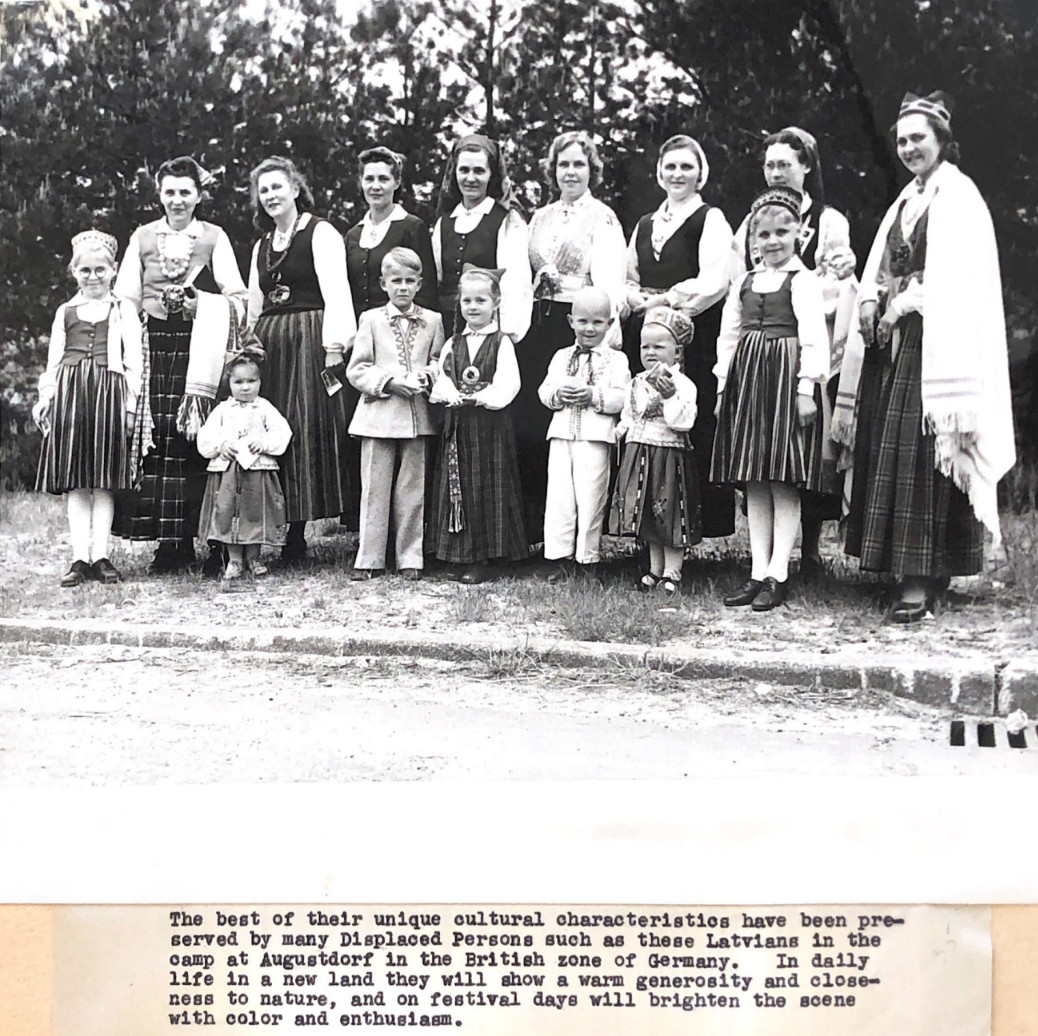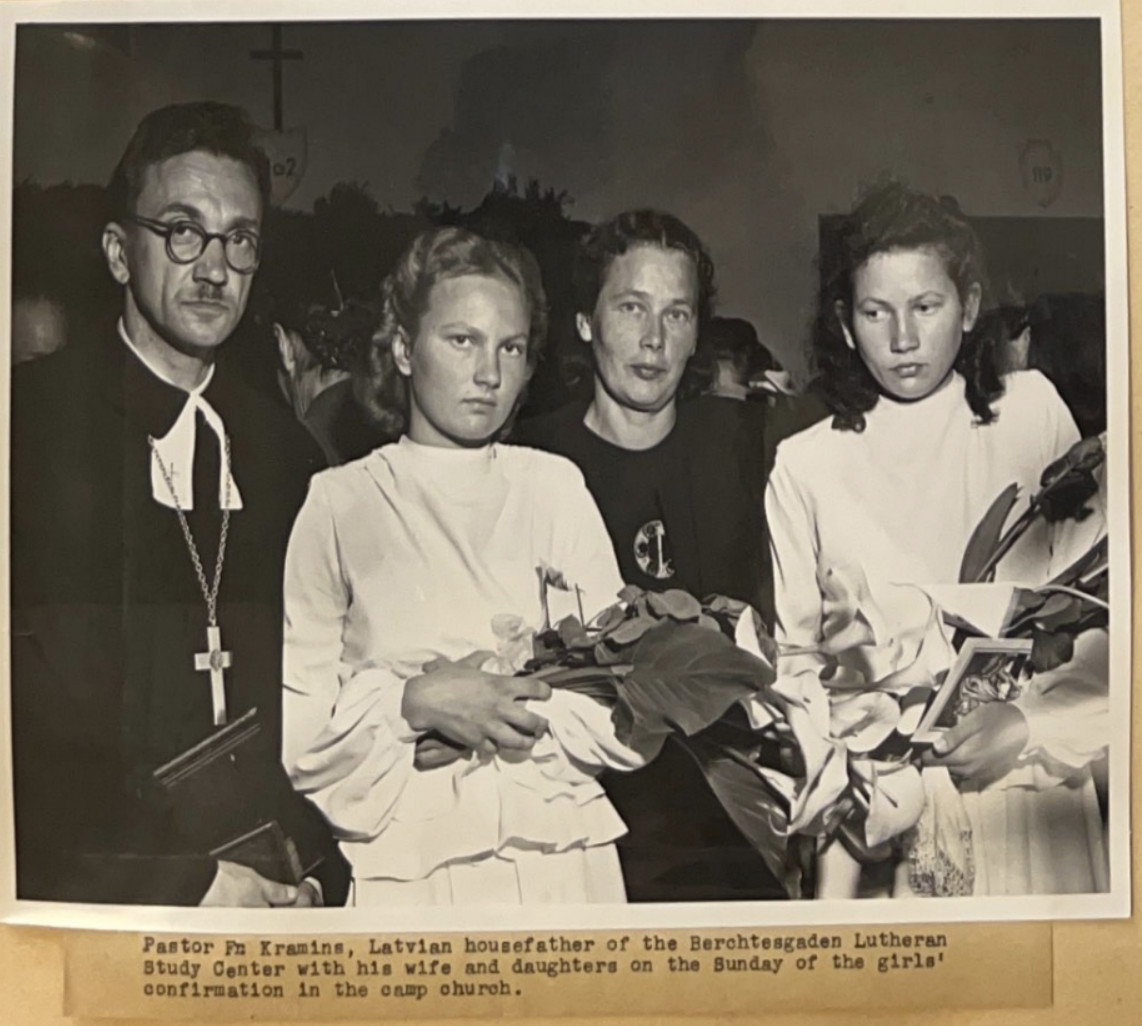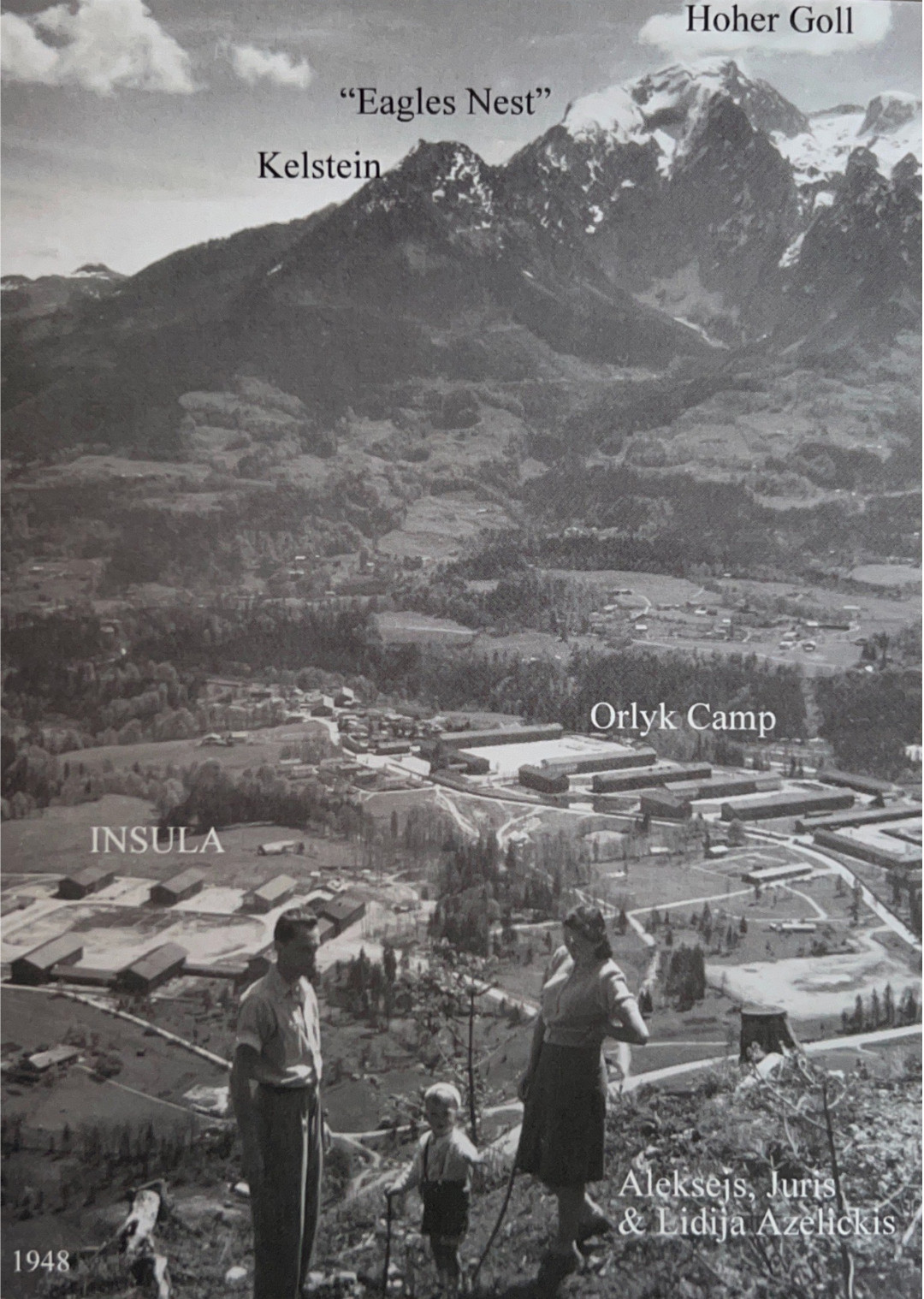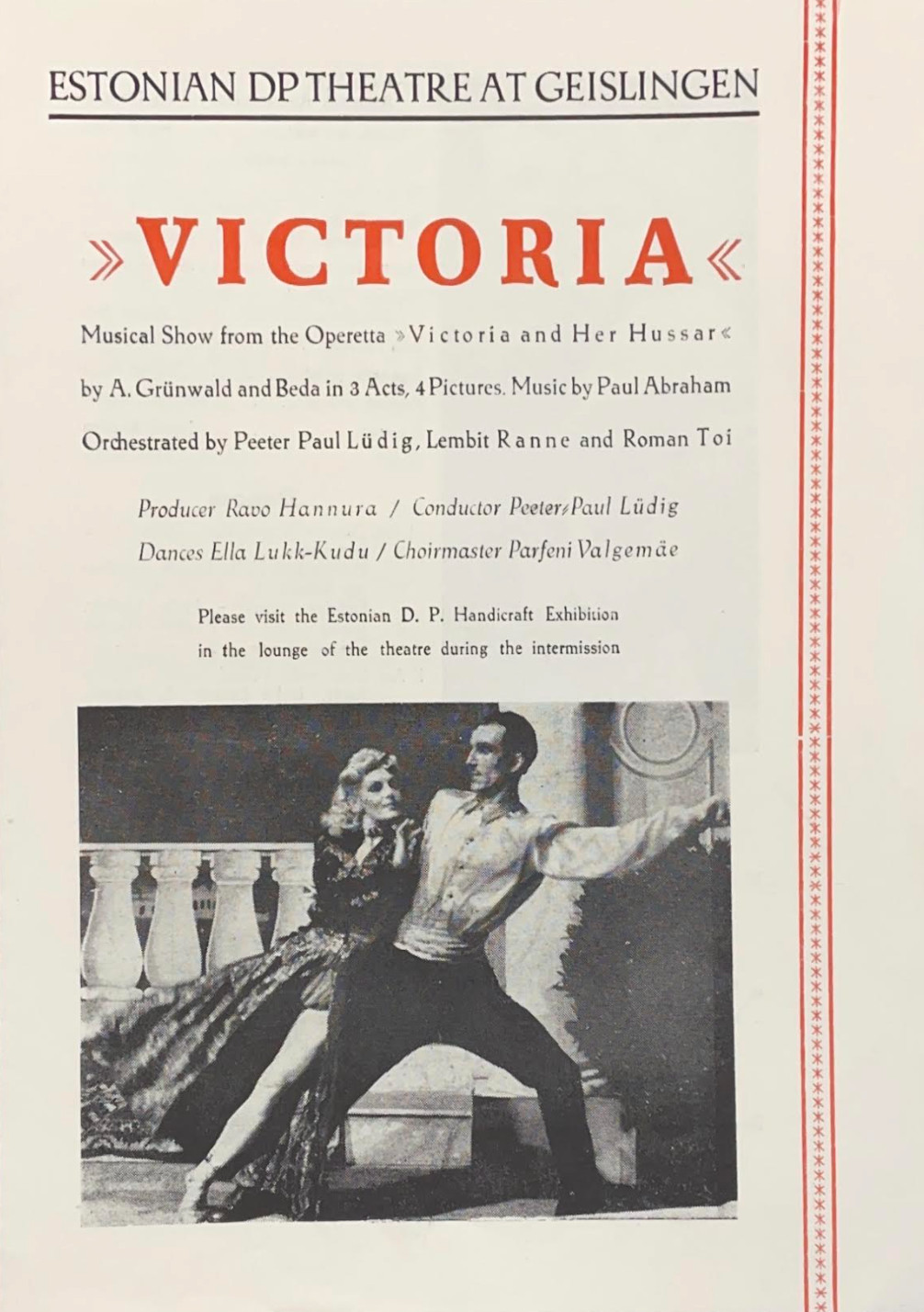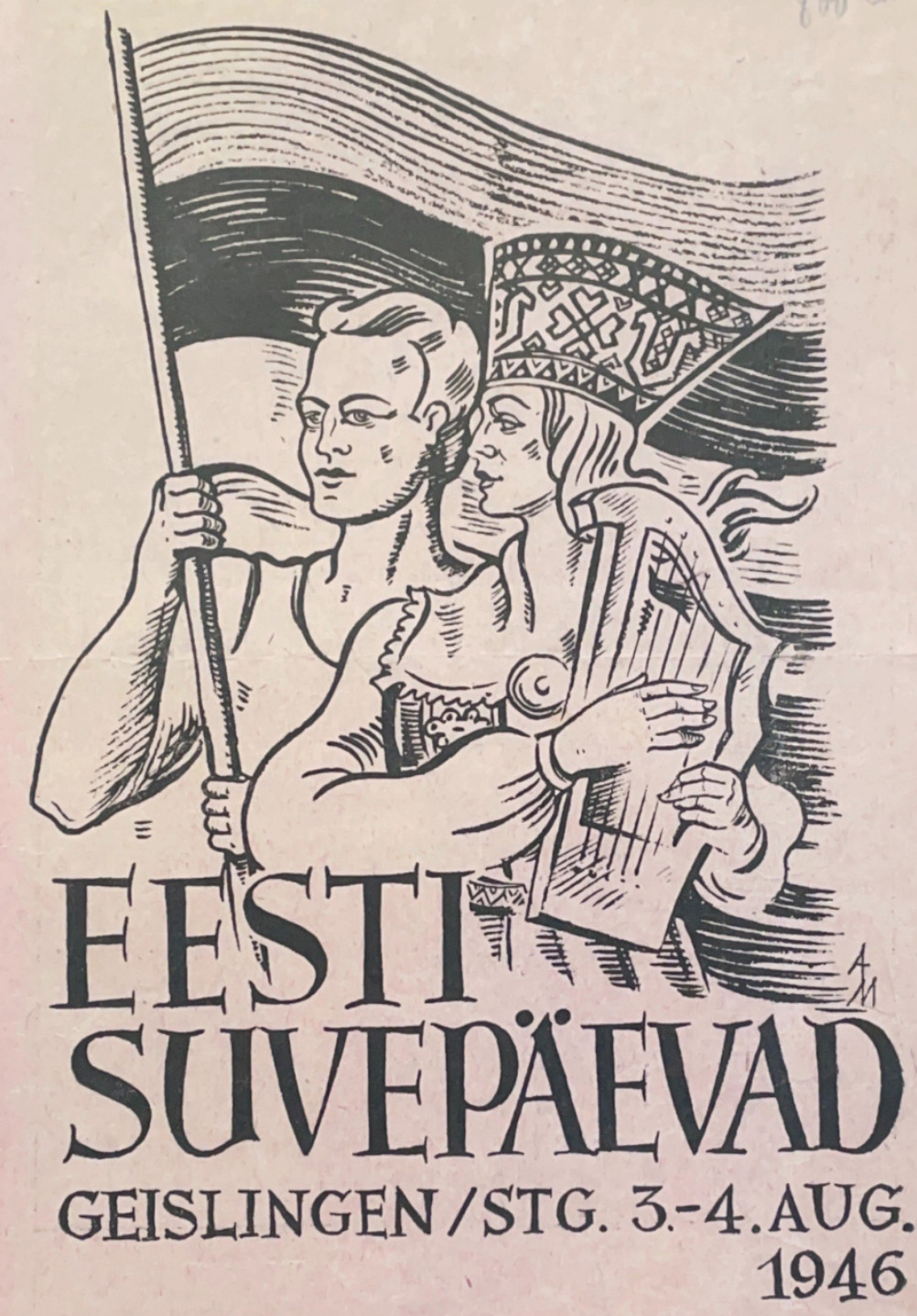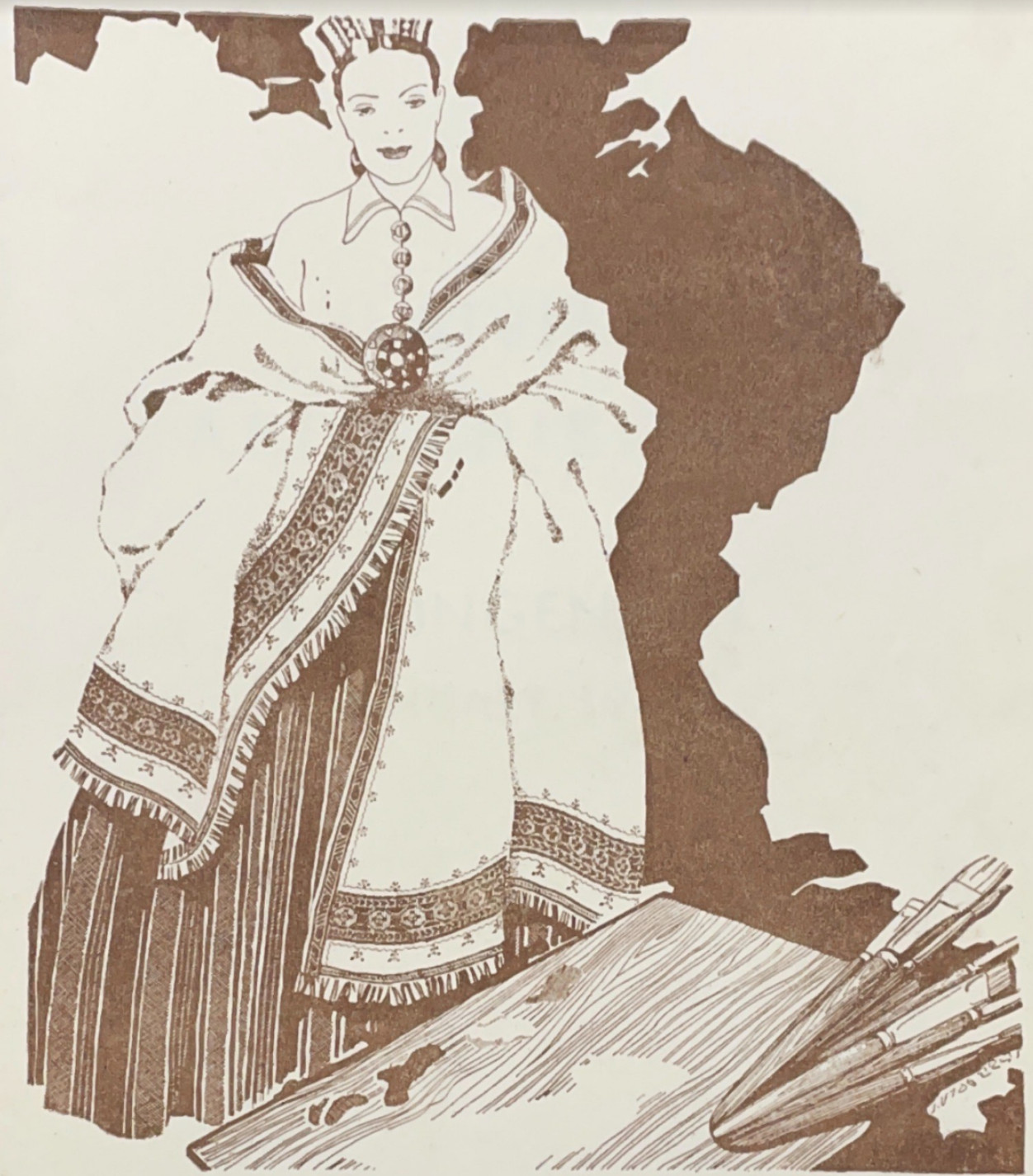Original caption: “Longing for their lost homeland, and endeavoring to preserve their cultural gifts, the Estonian people have held great festivals of music and art.”1
The “Churches in Exile” included Latvian, Lithuanian, Estonian, Hungarian, Polish, Ukrainian, Czech, and Slovak Lutherans living in Displaced Persons camps throughout Europe.2 The present exhibit focuses on the Baltic Lutheran “Churches in Exile,” from Estonian, Latvia, and Lithuania, whose story is prominent in the materials available for this research.
Special thanks go to John Plume and his generous donation of research materials, including a copy of his co-written book, Insula, that documents the experience of Latvian DPs. Due to the abundance of materials about the Latvian experience made available by Mr. Plume, for the first round of student research for this project, a high proportion of the details about the Churches in Exile focus on the Latvian story. Further phases of research will focus on filling in information and perspectives from other Baltic and Eastern European Lutherans. 3
Baltic Cultures in Occupied Germany
For more info on life inside DP CampsMemories of Berchtesgaden
In one of the DP camps near Berchtesgaden in the American Zone, Insula, there existed a large community of Latvians whose memories of exile and displacement are documented in the book, Insula, Island of Hope by John and Ventis Plume (2003).4 The displaced persons camp Insula was filled with life, cultural activity, education, and community.
Cultural Life
National Celebrations
As a way to preserve ethnic and national identity, many Baltic DPs observed patriotic holidays, such as celebrations of independence from the Soviet Union in 1918. These were often somber due DP’s exiled state and the current Soviet occupation of their countries. However, even with this painful nostalgia, the celebrations provided a change in the regular monotony of camp life.
Creative Writing
Creative writing also provided a meaningful outlet for the many frustrations brought by their conditions. For instance, “The Alien Bread” by Lithuanian poet Kazys Bradūnas describes a traveler encountering a comforting river and flower. Yet he realizes the flower will not grow at home and the river has a German name. Comparatively, Estonian poet Kaliju Lepik describes his return home to find his mother replaced by the bloody face of a stranger in “The Face in the Window”.5 “Kāds Kura Nav” (Somebody Who is Not) by Mārtiņš Zīverts similarly tells of a woman finding a disfigured refugee to be her husband whom she thought died in the war and whom she leaves her new lover to care for.
Theater
In comparison to other cultural expressions, theater reached the widest audience with entire camps attending theater performances. Early on, the Estonians at a camp at Geislingen created a prominent theater company. The Latvian theater company was easily formed in the Meerbeck DP Camp due to the large number of professional Latvian actors and even the entire Latvian Ballet.
Check out the Latvian Song and Dance Festival held in St. Paul, MN
Endnotes
- Lutheran World Federation, Lutheran World Federation Service to Refugees 1947-1949 Photographic Section, ed. Howard V Hong (St. Olaf College, Northfield, MN, 1949).
- Kenneth C. Senft, “The Lutheran World Federation and the Displaced Person,” (Lutheran Theological Seminary, 1952), found in Kierkegaard Library Rare Books Room.
- Ventis Plume, John Plume, and Insula, Island of Hope: A Latvian Memoir, Revised and enlarged edition. (Morgan Hill, CA: Bookstand Publishing, 2013).
- Ibid.
- Mark Wyman, DP: Europe’s Displaced Persons, 1945-1951 (Associated University Presses, Inc., 1989).
Click the button below to view the complete bibliography for this digital exhibition.
Photo Credits (from top to bottom, left to right)*
- (Heading) Choir of Latvian Dps, Lutheran World Federation Service to Refugees 1947-1949 Photographic Section, used with permission of the Lutheran World Federation and Evangelical Lutheran Church in America.
- Group of Latvian DP’s in traditional dress, Lutheran World Federation Photographic Section, used with permission of the Lutheran World Federation and Evangelical Lutheran Church in America.
- Map of the Baltic States and the Soviet Union, including the Eastern Bloc border change. Contributors to Wikimedia Projects.“File:Eastern Bloc Border Change 1938-1948.” Wikimedia Commons, December 6, 2020. https://commons.wikimedia.org/wiki/File:EasternBloc_BorderChange38-48-tr.svg.
- Young boy under a sign for Insula Displaced Persons’ Assembly Center, from: Ventis Plume, John Plume, and Vaira Vīke-Freiberga, Insula, Island of Hope: A Latvian Memoir, Revised and enlarged edition. (Morgan Hill, CA: Bookstand Publishing, 2013).
- Map of Insula, from: Ventis Plume, John Plume, and Vaira Vīke-Freiberga, Insula, Island of Hope: A Latvian Memoir, Revised and enlarged edition. (Morgan Hill, CA: Bookstand Publishing, 2013).
- Pastor with three women, Lutheran World Federation Photographic Section, used with permission of the Lutheran World Federation and Evangelical Lutheran Church in America.
- Playbill for a performance at the Estonian DP Theater at the Geislingen DP Camp in Germany, courtesy of the Immigration History Research Center Archives Mall Jurma (Jürma) papers IHRC3788.
- Translation: “Estonian Summer Days, Geislingen/ STG. 3-4 AUG. 1945” Flier for Estonian Cultural event in the Geislingen DP Camp in Germany, courtesy of the Immigration History Research Center Archives Mall Jurma (Jürma) papers IHRC3788.
- Flier for a Latvian Art Exhibition in a DP camp, courtesy of the Immigration History Research Center Archives Mall Jurma (Jürma) papers IHRC3788.
*Description ordering is based on computer view. If viewing this page on a smartphone or tablet, please check the descriptions provided as the ordering may be distorted.
